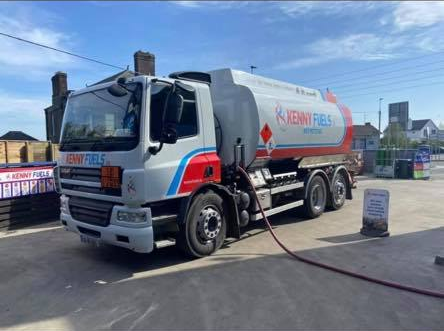What Is the Difference Between Heating Oil and Kerosene?

Whether it’s cooking, heating or running machinery, we need different fuels for different needs. Choosing Fuel is an essential resource that powers various industries and keeps our homes warm.
By understanding these fuels’ unique properties and applications, you can make informed decisions about which is best suited for specific purposes.
In this blog, we will delve into the key differences between kerosene and heating oil.
By exploring their properties, we aim to provide a comprehensive understanding of these fuels and their unique characteristics, so the next time you are looking for home heating oil in Wexford, there will be no confusion.
- Definition and Composition
Kerosene
It is a liquid fuel derived from petroleum, commonly known as paraffin or lamp oil. It is a versatile fuel used for various applications, such as
- Powering jet engines
- Lighting lamps
- Operating stoves
It is a flammable hydrocarbon liquid composed of carbon and hydrogen atoms. Its chemical composition includes a mixture of hydrocarbons, primarily alkanes and aromatics.
Heating Oil
Heating oil, also called fuel oil, is a refined form of crude oil. It is commonly used for heating residential and commercial spaces.
Heating oil in Wexford undergoes additional refining processes to remove impurities and adjust its viscosity, making it suitable for efficient combustion in heating systems.
- Origin and Production
Kerosene
The use of this as a fuel dates back to the 19th century when it was first developed as a lamp fuel. It is derived from crude oil through the distillation process.
During this process, crude oil is heated, and its components are separated based on their boiling points. It is obtained as a fraction between gasoline and diesel fuel. After distillation, it undergoes further refining processes to remove impurities and adjust its properties for optimal performance.
Heating Oil
Similar to kerosene, heating oil is derived from crude oil. The refining process of heating oil involves additional steps beyond those used for kerosene.
These steps include further distillation, desulfurization, and the removal of contaminants. The refining process ensures that heating oil meets the specific requirements for efficient combustion in heating systems.
- Properties and Uses
Kerosene
Kerosene has a relatively low energy content compared to other fuels. However, it burns cleanly and produces a hot flame. These properties make it suitable for jet engines, lamps, and cooking applications. The low flashpoint of kerosene enables easy ignition, making it convenient for use in various contexts.
Heating Oil
Heating oil has a higher energy content compared to kerosene.
This higher energy content allows it to generate more heat when burned. Its slower burn rate makes heating oil ideal for use in furnaces and boilers, providing efficient and consistent heat for residential and commercial heating systems.
- Pricing and Availability
Various factors influence the price of both kerosene and heating oil. Supply and demand dynamics, economic conditions, geopolitical influences, and seasonal variations impact the price of these fuels.
Additionally, availability may vary regionally due to infrastructure and distribution networks. Consumers should consider long-term cost-effectiveness, local market conditions, and environmental impact when choosing a fuel source.
If you are looking for home heating oil in Wexford, you have come to the right place, contact us; we will deliver kerosene or heating oil whenever you need it.
- Environmental Considerations
Kerosene
Kerosene combustion releases carbon dioxide (CO2) and other gases into the atmosphere, contributing to climate change.
Kerosene combustion also produces pollutants such as sulfur dioxide (SO2) contributing to air pollution. Moreover, accidental spills or leaks of kerosene can contaminate soil and water sources, posing environmental hazards.
Heating Oil
Similar to kerosene, the combustion of heating oil produces CO2 and other greenhouse gases.
However, modern heating oil systems have made significant advancements in reducing emissions compared to older systems. New technologies like high-efficiency burners and improved combustion processes help minimize environmental impact.
- Storage and Safety
Kerosene
Proper storage and handling of kerosene are crucial to prevent accidents or spills. Storing kerosene in approved containers specifically designed for flammable liquids is essential.
These containers should be kept in well-ventilated areas and away from ignition sources. Regulatory guidelines outline safety precautions and storage requirements for kerosene to ensure the well-being of users and minimize environmental risks.
Heating Oil
Safe storage and handling practices are equally important for heating oil. Regular tank inspections, maintenance, and proper ventilation are necessary to prevent leaks and ensure the safety of the heating system. Adequate safeguards, such as oil tank alarms and leak detection systems, help monitor the tank’s condition and mitigate potential risks.
Conclusion
Understanding the differences between kerosene and heating oil is essential for making informed choices in various industries and household applications.
While kerosene is commonly used for lamps, stoves, and cooking, heating oil provides efficient heating for homes and businesses.
Considerations such as environmental impact, safety precautions, pricing, and availability should be considered when deciding on the appropriate Fuel for specific needs.
Exploring renewable alternatives and improving fuel efficiency plays a vital role in shaping a sustainable future. By making conscious choices, we can contribute to a cleaner environment and a more energy-efficient world.
If you are looking for home heating oil in Wexford, explore our website.